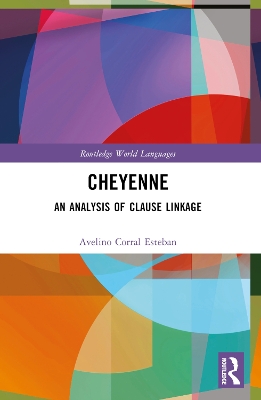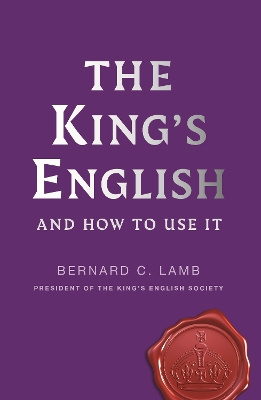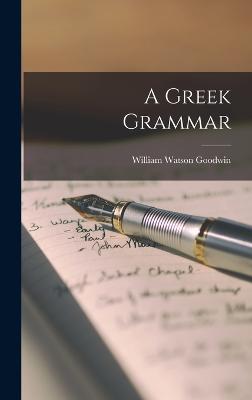Cheyenne
 portes grátis
portes grátis
Cheyenne
An Analysis of Clause Linkage
Corral Esteban, Avelino
Taylor & Francis Ltd
11/2024
310
Mole
9781032319995
Pré-lançamento - envio 15 a 20 dias após a sua edição
Descrição não disponível.
Cheyenne flag
Preface
List of tables
List of figures
List of abbreviations
1 Introduction
1.1 Background information
1.2 Overview of Cheyenne
1.2.1 Sociolinguistic information
1.2.2 Genealogical position
1.2.3 Basic points on the phonology of Cheyenne
1.2.4 Spelling system
1.3 Basic morphosyntactic properties of Cheyenne
1.3.1 Polsynthetic morphology
1.3.2 Morphosyntactic alignment
1.3.3 Information structure
1.3.4 The verbal complex
1.3.5 Grammatical categories
1.3.6 Lexical categories
1.3.7. Morphosyntactic coding of arguments
Notes
2 RRG and Cheyenne simple sentences
2.1 The syntactic representation of a sentence
2.2 The semantic representation of a sentence
2.3 Information structure
2.4 The linking algorithm
Notes
3 Clause linkage theory
3.1 Theoretical approaches to the study of complex sentences
3.2 The RRG approach to the study of the structure of complex sentences
Notes
4 Juncture-nexus combinations
4.1 Nuclear junctures
4.2 Core junctures
4.3 Clausal junctures
4.4 Sentential junctures
Notes
5 Semantic relations between units
5.1 Single actions
5.1.1 Causative [1]
5.1.2 Modifying sub-actions
5.1.3 Phase
5.2 Multiple actions
5.2.1 Simultaneous
5.2.2 Sequential
5.2.3 Causative [2]
5.3 Endeavour
5.3.1 Attempt
5.3.2 Success
5.3.3 Failure
5.4 Intentions
5.4.1 Refusal
5.4.2 Psych-action
5.4.3 Purposive
5.5 Bringing about
5.5.1 Causative [3]
5.5.2 Jussive
5.5.3 Permissive
5.5.4 Injunctive
5.6 Perception
5.6.1 Direct perception
5.6.2 Indirect perception
5.7 Intentionality
5.7.1 Propositional attitude
5.7.2 Cognition
5.7.3 Emotion
5.8 Speech
5.8.1 Indirect discourse
5.8.2 Direct discourse
5.9 Locational
5.9.1 Space
5.9.2 Time
5.10 Circumstances
5.10.1 Reason
5.10.2 Conditional
5.10.3 Concessive
5.11 Temporality
5.11.1 Temporal / Simultaneous actions
5.11.2 Temporal / Sequential actions
5.11.3 Situation-situation / temporally unordered SoAs
5.12 Complex RPs
Notes
6 Relationship between clause linkage types and semantic relations
6.1 Intereclausal relations hierarchy
6.2 Iconic correlation between syntactic and semantic representations
Notes
7 The role of discourse-pragmatics in complex sentences
7.1 Information structure in complex sentences
7.2 Obviation in Cheyenne narration
Notes
8 Concluding remarks
Glossary of RRG terms
References
Appendix
Index
Preface
List of tables
List of figures
List of abbreviations
1 Introduction
1.1 Background information
1.2 Overview of Cheyenne
1.2.1 Sociolinguistic information
1.2.2 Genealogical position
1.2.3 Basic points on the phonology of Cheyenne
1.2.4 Spelling system
1.3 Basic morphosyntactic properties of Cheyenne
1.3.1 Polsynthetic morphology
1.3.2 Morphosyntactic alignment
1.3.3 Information structure
1.3.4 The verbal complex
1.3.5 Grammatical categories
1.3.6 Lexical categories
1.3.7. Morphosyntactic coding of arguments
Notes
2 RRG and Cheyenne simple sentences
2.1 The syntactic representation of a sentence
2.2 The semantic representation of a sentence
2.3 Information structure
2.4 The linking algorithm
Notes
3 Clause linkage theory
3.1 Theoretical approaches to the study of complex sentences
3.2 The RRG approach to the study of the structure of complex sentences
Notes
4 Juncture-nexus combinations
4.1 Nuclear junctures
4.2 Core junctures
4.3 Clausal junctures
4.4 Sentential junctures
Notes
5 Semantic relations between units
5.1 Single actions
5.1.1 Causative [1]
5.1.2 Modifying sub-actions
5.1.3 Phase
5.2 Multiple actions
5.2.1 Simultaneous
5.2.2 Sequential
5.2.3 Causative [2]
5.3 Endeavour
5.3.1 Attempt
5.3.2 Success
5.3.3 Failure
5.4 Intentions
5.4.1 Refusal
5.4.2 Psych-action
5.4.3 Purposive
5.5 Bringing about
5.5.1 Causative [3]
5.5.2 Jussive
5.5.3 Permissive
5.5.4 Injunctive
5.6 Perception
5.6.1 Direct perception
5.6.2 Indirect perception
5.7 Intentionality
5.7.1 Propositional attitude
5.7.2 Cognition
5.7.3 Emotion
5.8 Speech
5.8.1 Indirect discourse
5.8.2 Direct discourse
5.9 Locational
5.9.1 Space
5.9.2 Time
5.10 Circumstances
5.10.1 Reason
5.10.2 Conditional
5.10.3 Concessive
5.11 Temporality
5.11.1 Temporal / Simultaneous actions
5.11.2 Temporal / Sequential actions
5.11.3 Situation-situation / temporally unordered SoAs
5.12 Complex RPs
Notes
6 Relationship between clause linkage types and semantic relations
6.1 Intereclausal relations hierarchy
6.2 Iconic correlation between syntactic and semantic representations
Notes
7 The role of discourse-pragmatics in complex sentences
7.1 Information structure in complex sentences
7.2 Obviation in Cheyenne narration
Notes
8 Concluding remarks
Glossary of RRG terms
References
Appendix
Index
Este título pertence ao(s) assunto(s) indicados(s). Para ver outros títulos clique no assunto desejado.
Cheyenne;grammar;linguistics;clause;typological;theoretical
Cheyenne flag
Preface
List of tables
List of figures
List of abbreviations
1 Introduction
1.1 Background information
1.2 Overview of Cheyenne
1.2.1 Sociolinguistic information
1.2.2 Genealogical position
1.2.3 Basic points on the phonology of Cheyenne
1.2.4 Spelling system
1.3 Basic morphosyntactic properties of Cheyenne
1.3.1 Polsynthetic morphology
1.3.2 Morphosyntactic alignment
1.3.3 Information structure
1.3.4 The verbal complex
1.3.5 Grammatical categories
1.3.6 Lexical categories
1.3.7. Morphosyntactic coding of arguments
Notes
2 RRG and Cheyenne simple sentences
2.1 The syntactic representation of a sentence
2.2 The semantic representation of a sentence
2.3 Information structure
2.4 The linking algorithm
Notes
3 Clause linkage theory
3.1 Theoretical approaches to the study of complex sentences
3.2 The RRG approach to the study of the structure of complex sentences
Notes
4 Juncture-nexus combinations
4.1 Nuclear junctures
4.2 Core junctures
4.3 Clausal junctures
4.4 Sentential junctures
Notes
5 Semantic relations between units
5.1 Single actions
5.1.1 Causative [1]
5.1.2 Modifying sub-actions
5.1.3 Phase
5.2 Multiple actions
5.2.1 Simultaneous
5.2.2 Sequential
5.2.3 Causative [2]
5.3 Endeavour
5.3.1 Attempt
5.3.2 Success
5.3.3 Failure
5.4 Intentions
5.4.1 Refusal
5.4.2 Psych-action
5.4.3 Purposive
5.5 Bringing about
5.5.1 Causative [3]
5.5.2 Jussive
5.5.3 Permissive
5.5.4 Injunctive
5.6 Perception
5.6.1 Direct perception
5.6.2 Indirect perception
5.7 Intentionality
5.7.1 Propositional attitude
5.7.2 Cognition
5.7.3 Emotion
5.8 Speech
5.8.1 Indirect discourse
5.8.2 Direct discourse
5.9 Locational
5.9.1 Space
5.9.2 Time
5.10 Circumstances
5.10.1 Reason
5.10.2 Conditional
5.10.3 Concessive
5.11 Temporality
5.11.1 Temporal / Simultaneous actions
5.11.2 Temporal / Sequential actions
5.11.3 Situation-situation / temporally unordered SoAs
5.12 Complex RPs
Notes
6 Relationship between clause linkage types and semantic relations
6.1 Intereclausal relations hierarchy
6.2 Iconic correlation between syntactic and semantic representations
Notes
7 The role of discourse-pragmatics in complex sentences
7.1 Information structure in complex sentences
7.2 Obviation in Cheyenne narration
Notes
8 Concluding remarks
Glossary of RRG terms
References
Appendix
Index
Preface
List of tables
List of figures
List of abbreviations
1 Introduction
1.1 Background information
1.2 Overview of Cheyenne
1.2.1 Sociolinguistic information
1.2.2 Genealogical position
1.2.3 Basic points on the phonology of Cheyenne
1.2.4 Spelling system
1.3 Basic morphosyntactic properties of Cheyenne
1.3.1 Polsynthetic morphology
1.3.2 Morphosyntactic alignment
1.3.3 Information structure
1.3.4 The verbal complex
1.3.5 Grammatical categories
1.3.6 Lexical categories
1.3.7. Morphosyntactic coding of arguments
Notes
2 RRG and Cheyenne simple sentences
2.1 The syntactic representation of a sentence
2.2 The semantic representation of a sentence
2.3 Information structure
2.4 The linking algorithm
Notes
3 Clause linkage theory
3.1 Theoretical approaches to the study of complex sentences
3.2 The RRG approach to the study of the structure of complex sentences
Notes
4 Juncture-nexus combinations
4.1 Nuclear junctures
4.2 Core junctures
4.3 Clausal junctures
4.4 Sentential junctures
Notes
5 Semantic relations between units
5.1 Single actions
5.1.1 Causative [1]
5.1.2 Modifying sub-actions
5.1.3 Phase
5.2 Multiple actions
5.2.1 Simultaneous
5.2.2 Sequential
5.2.3 Causative [2]
5.3 Endeavour
5.3.1 Attempt
5.3.2 Success
5.3.3 Failure
5.4 Intentions
5.4.1 Refusal
5.4.2 Psych-action
5.4.3 Purposive
5.5 Bringing about
5.5.1 Causative [3]
5.5.2 Jussive
5.5.3 Permissive
5.5.4 Injunctive
5.6 Perception
5.6.1 Direct perception
5.6.2 Indirect perception
5.7 Intentionality
5.7.1 Propositional attitude
5.7.2 Cognition
5.7.3 Emotion
5.8 Speech
5.8.1 Indirect discourse
5.8.2 Direct discourse
5.9 Locational
5.9.1 Space
5.9.2 Time
5.10 Circumstances
5.10.1 Reason
5.10.2 Conditional
5.10.3 Concessive
5.11 Temporality
5.11.1 Temporal / Simultaneous actions
5.11.2 Temporal / Sequential actions
5.11.3 Situation-situation / temporally unordered SoAs
5.12 Complex RPs
Notes
6 Relationship between clause linkage types and semantic relations
6.1 Intereclausal relations hierarchy
6.2 Iconic correlation between syntactic and semantic representations
Notes
7 The role of discourse-pragmatics in complex sentences
7.1 Information structure in complex sentences
7.2 Obviation in Cheyenne narration
Notes
8 Concluding remarks
Glossary of RRG terms
References
Appendix
Index
Este título pertence ao(s) assunto(s) indicados(s). Para ver outros títulos clique no assunto desejado.







